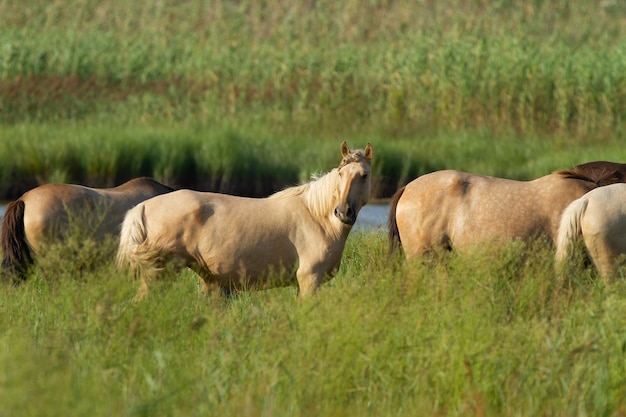Recognizing Lameness in Horses and Cattle: What Owners Should Watch For

Recognizing Lameness in Horses and Cattle: What Owners Should Watch For
If you’ve ever noticed your horse taking a hesitant step or seen your cattle moving with an uneven gait, you know how unsettling it can be. Lameness in horses and signs of lameness in cattle are among the most common—and concerning—issues faced by livestock owners in Laredo and the surrounding communities. Early detection is not just about comfort for your animals; it also plays a vital role in their long-term health, productivity, and quality of life. At Rio Grande Veterinary Clinic, located at 3311 East Del Mar Blvd Suite 201, Laredo, TX 78041, our mixed-animal veterinary professionals are dedicated to helping you recognize the subtle and obvious signs of lameness, whether you care for a single horse or a large cattle operation.
In this guide, you’ll learn how to spot early warning signs of lameness in horses and cattle, understand what may be causing the problem, and discover the best ways to manage and prevent lameness with the support of your local veterinary experts. We’ll also explain when it’s time to schedule an appointment for a thorough examination, so you can feel confident you’re doing everything possible to keep your animals healthy. If you’re searching for quality veterinary services in Laredo, or hoping to find a “vet near me” you can trust with your livestock, our veterinary team is here to support you every step of the way. For those seeking comprehensive livestock care, our livestock general medicine services are designed to address a wide range of health concerns, including lameness and mobility issues.
Recognizing the Signs: What Does Lameness Look Like in Horses and Cattle?
Key Symptoms in Horses
Lameness in horses can be obvious or surprisingly subtle. Often, the first sign is a change in how your horse moves—perhaps there’s a slight head bob when trotting, or your horse starts to favor one leg over another. Common signs include shortened stride length, a reluctance to bear weight on a particular limb, or a horse that suddenly resists being saddled and ridden. You may notice your horse shifting weight from leg to leg when standing, or even see swelling or heat in a joint or hoof. Behavioral changes, such as irritability or a drop in performance, can also signal discomfort.
Warning Signs in Cattle
When it comes to signs of lameness in cattle, the indications can range from a subtle uneven gait to clear limping. Cattle may spend more time lying down, stand with an arched back, or show reluctance to walk, especially over rough terrain. Observant owners might catch a decrease in feed intake or see a drop in milk production in dairy cows. Sometimes, swelling or visible wounds on the hooves or legs are present. In larger groups, a lame animal may start to lag behind the herd or isolate itself.
Why Vigilance Matters
Spotting these symptoms early can make a significant difference. In the warm, sometimes muddy conditions of South Texas, lameness can progress quickly due to infections or injuries. Recognizing these changes promptly allows you to intervene sooner, often resulting in faster recovery and less disruption to your operation.
Understanding the Causes: Why Do Horses and Cattle Become Lame?
Common Causes of Lameness in Horses
The reasons behind lameness in horses are varied. Injuries such as sprains, strains, or fractures are frequent culprits, particularly in active or working animals. Hoof problems, including abscesses, bruises, or laminitis, can quickly lead to discomfort. Joint issues like arthritis are especially common in older horses, while tendon or ligament injuries can affect animals of any age. Sometimes, poorly fitting tack or hard, rocky ground can contribute to repeated stress injuries.
Typical Triggers in Cattle
In cattle, lameness often results from hoof disorders such as foot rot, sole ulcers, or white line disease. Wet pastures or muddy pens—common during rainy seasons in Laredo—can soften hooves, making them more susceptible to injury or infection. Trauma, whether from rough terrain, sharp objects, or crowding, is also a leading cause. Additionally, nutritional deficiencies can weaken hooves and joints, increasing the risk of lameness. Infectious diseases and genetic predispositions sometimes play a role as well.
The Role of Environment and Management
Both horses and cattle are heavily influenced by their environment. Regularly walking on uneven, rocky ground, standing for long periods in wet conditions, or being exposed to unsanitary environments can all contribute to lameness. Good management practices, including prompt attention to minor injuries and maintaining clean, dry living conditions, are essential for minimizing risk.
Treatment and Management: What to Expect from Your Veterinary Team
Initial Assessment and Diagnostic Steps
When you notice lameness in your horse or cattle, a thorough examination by your veterinary team is the first step. Our veterinarians at Rio Grande Veterinary Clinic will start with a detailed history and physical assessment, carefully observing the animal’s gait, posture, and response to manipulation. Diagnostic techniques may include palpation, joint flexion tests, or the use of nerve blocks to pinpoint the source of pain. For more complex cases, imaging such as radiographs or ultrasounds may be used to assess bone, joint, or soft tissue injuries.
For cattle, our cattle palpations are an important tool not only for reproductive exams but also for evaluating general health, which can relate to mobility and underlying causes of lameness.
Treatment Approaches for Horses
Treatment options for lameness in horses depend on the underlying cause. Rest and supportive care are foundational for most injuries. In some cases, your veterinarian may recommend anti-inflammatory medications, hoof care such as corrective trimming or shoeing, or targeted therapies like cold hosing for swelling. If infection is present, antibiotics or wound care may be needed. More advanced cases, such as fractures or severe joint injuries, could require surgical intervention or long-term rehabilitation plans.
Our equine general medicine services address a wide range of conditions, from acute injuries to chronic lameness, ensuring your horse receives comprehensive care tailored to its needs.
Management for Lameness in Cattle
In cattle, effective treatment often begins with addressing hoof problems. This may involve hoof trimming, cleaning and disinfecting wounds, and administering appropriate medications to control pain or infection. For infectious causes like foot rot, prompt antibiotic therapy is crucial. Your veterinary team may also recommend changes in bedding, footing, or nutrition to prevent recurrence. Severe cases may require more intensive interventions, including surgical procedures if necessary.
Throughout treatment, the focus remains on minimizing discomfort, promoting healing, and restoring mobility as quickly as possible. The welfare and productivity of your livestock are always our top priorities.
Prevention and At-Home Care: Supporting Your Animals’ Mobility
Steps for Horse Owners
Preventing lameness in horses begins with regular hoof care, which means scheduling routine farrier visits and inspecting hooves for cracks, stones, or signs of infection. Maintaining safe, even footing in stalls and turnout areas helps reduce the risk of injuries. It’s also helpful to gradually condition horses for increased activity, watch for changes in stride or attitude, and ensure tack fits properly to prevent pressure injuries. Monitoring your horse’s weight and providing balanced nutrition supports joint and hoof health over time.
Cattle Management Strategies
For cattle owners, prevention focuses on maintaining clean, dry living conditions, especially in the variable weather of South Texas. Regular hoof trimming and careful observation of herd movement can catch problems before they become severe. Implementing good nutritional programs, particularly for minerals and vitamins crucial for hoof integrity, can make a substantial difference. Additionally, monitoring for signs of infectious diseases and isolating affected animals when necessary helps protect the entire herd.
When At-Home Measures Are Not Enough
While these steps can greatly reduce the risk of lameness, some cases may still develop due to factors beyond your control. Knowing when to transition from home care to professional intervention is key for your animals’ well-being.
When to Seek Veterinary Care: Acting Quickly for the Best Outcome
Red Flags That Require Immediate Attention
If your horse or cow is unable to bear weight on a limb, has a wound with visible swelling or discharge, or develops a sudden, severe limp, immediate veterinary attention is critical. Additional warning signs include a rapid decline in appetite, fever, or signs of systemic illness, which may indicate a more serious underlying condition. Persistent lameness that does not improve after a day or two of rest, or any situation where the animal’s quality of life is impacted, warrants a call to your veterinary team.
The Value of Professional Assessment
Timely evaluation by our veterinarians at Rio Grande Veterinary Clinic ensures that the underlying cause is accurately diagnosed and an effective treatment plan is started. Delaying care can lead to complications that are more difficult—and expensive—to address down the road. Remember, our general medicine services for large animals are designed to address a broad spectrum of health concerns, including lameness in horses and cattle, right here in Laredo.
Scheduling Your Appointment
Because lameness can affect productivity, comfort, and even the safety of your herd or stable, don’t wait to reach out if you have concerns. Our veterinary professionals are committed to providing the highest standard of care for your animals, whether you need a routine exam or urgent intervention.
Keeping Your Horses and Cattle Moving: Trust Rio Grande Veterinary Clinic for Local Expertise
Lameness in horses and the signs of lameness in cattle can appear for many reasons, but early recognition and professional care make all the difference. By staying alert to subtle changes in movement and acting quickly when you see signs of trouble, you help safeguard your animals’ health, comfort, and productivity. At Rio Grande Veterinary Clinic, we are proud to serve as your trusted source for comprehensive livestock care in Laredo and the surrounding communities. Our veterinary team is always here to answer your questions, provide in-depth examinations, and offer tailored treatment plans that prioritize your animals’ well-being.
If you’re searching for a “vet near me” who understands the unique needs of horses and cattle in South Texas, look no further. To schedule an appointment or learn more about our livestock general medicine services, call us at (830) 203-0586 or visit us at 3311 East Del Mar Blvd Suite 201, Laredo, TX 78041. Our experienced veterinarians are ready to help you protect your herd’s health with quality veterinary services in Laredo, so you can feel confident your animals are in good hands. Remember, prompt action and ongoing preventive care are the keys to keeping your horses and cattle moving comfortably for years to come.
Disclaimer: This blog is intended for general educational purposes and should not be used as a substitute for professional veterinary advice. If you suspect lameness or any health concern in your animals, please consult your veterinarian for a specific diagnosis and treatment plan. For more information on lameness in horses and cattle, you may also visit reputable resources such as the American Association of Equine Practitioners or the American Association of Bovine Practitioners.

















